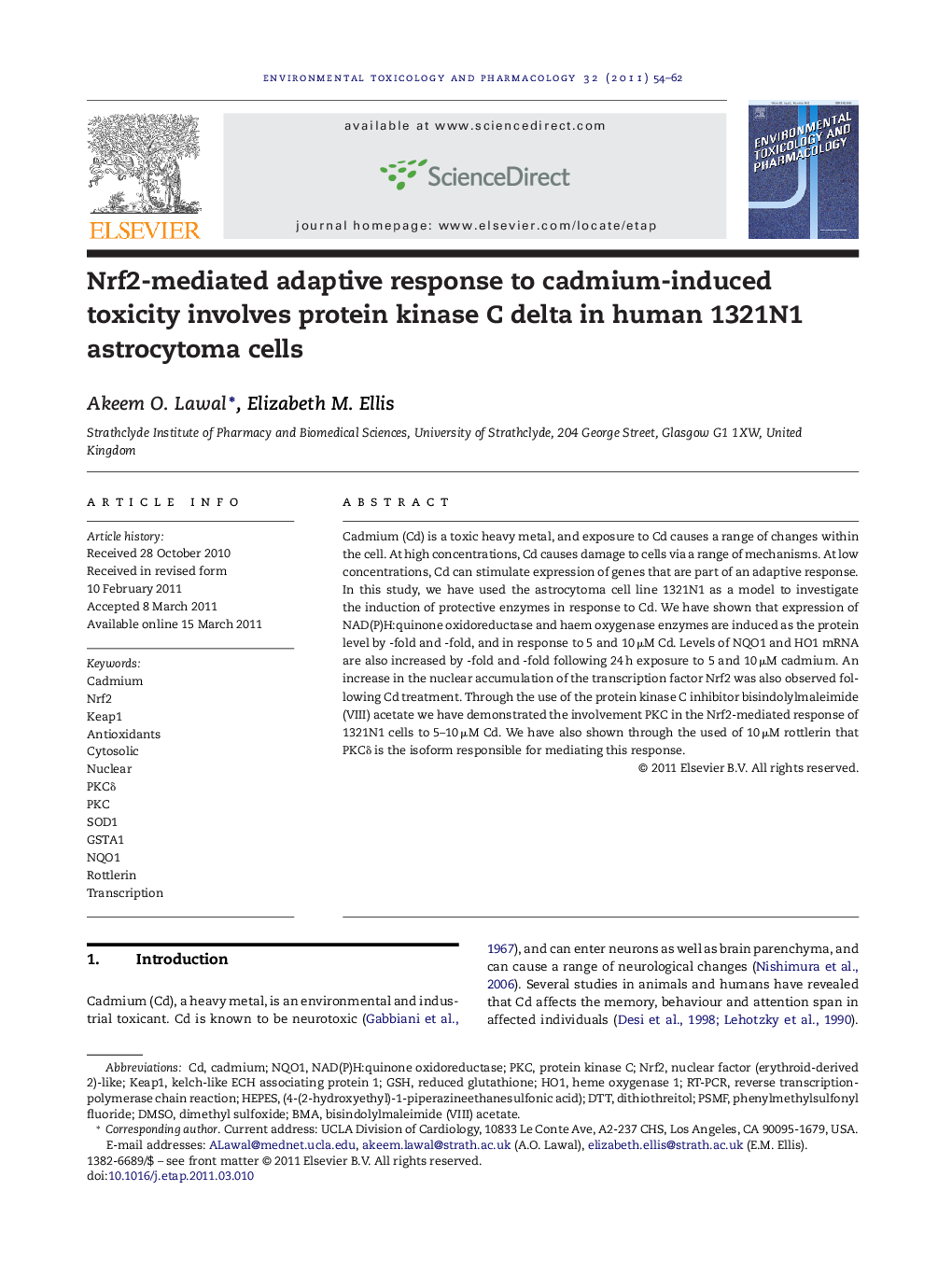| Article ID | Journal | Published Year | Pages | File Type |
|---|---|---|---|---|
| 2584161 | Environmental Toxicology and Pharmacology | 2011 | 9 Pages |
Cadmium (Cd) is a toxic heavy metal, and exposure to Cd causes a range of changes within the cell. At high concentrations, Cd causes damage to cells via a range of mechanisms. At low concentrations, Cd can stimulate expression of genes that are part of an adaptive response. In this study, we have used the astrocytoma cell line 1321N1 as a model to investigate the induction of protective enzymes in response to Cd. We have shown that expression of NAD(P)H:quinone oxidoreductase and haem oxygenase enzymes are induced as the protein level by -fold and -fold, and in response to 5 and 10 μM Cd. Levels of NQO1 and HO1 mRNA are also increased by -fold and -fold following 24 h exposure to 5 and 10 μM cadmium. An increase in the nuclear accumulation of the transcription factor Nrf2 was also observed following Cd treatment. Through the use of the protein kinase C inhibitor bisindolylmaleimide (VIII) acetate we have demonstrated the involvement PKC in the Nrf2-mediated response of 1321N1 cells to 5–10 μM Cd. We have also shown through the used of 10 μM rottlerin that PKCδ is the isoform responsible for mediating this response.
